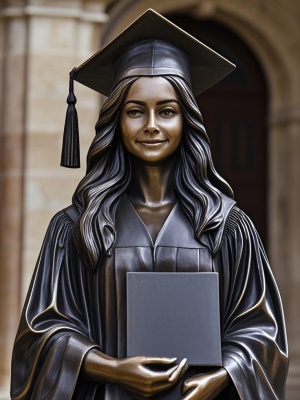Exploring the Fascinating World of 2D Sculpture
Introduction: Redefining Dimensions in Art
2D sculpture represents an intriguing intersection between traditional sculpture and two-dimensional art forms. Unlike conventional three-dimensional sculptures that occupy physical space, 2D sculptures create the illusion of depth and form on flat surfaces. This innovative art form challenges our perception of dimensionality while offering unique creative possibilities for artists and designers.
At MediaAI Art Gallery, we've observed growing interest in this hybrid art form, particularly among digital artists exploring new ways to blend traditional techniques with modern technology. The rise of AI-assisted creation tools has further expanded the boundaries of what's possible in 2D sculpture.
The Essence of 2D Sculpture
Defining Characteristics
2D sculpture possesses several distinctive features that set it apart from other art forms:
- Illusion of depth created through shading and perspective techniques
- Physical presence despite flat surface orientation
- Often incorporates mixed media elements
- Can exist as wall-mounted or free-standing pieces
- Frequently explores the relationship between form and space
Historical Context
The concept of 2D sculpture has roots in ancient bas-relief techniques, but gained significant attention during the 20th century modernist movements. Artists like Pablo Picasso experimented with flattening three-dimensional forms in their work, paving the way for contemporary 2D sculpture practices.
Creating 2D Sculptures: Techniques and Approaches
Traditional Methods
Traditional 2D sculpture techniques include:
- Bas-relief carving in stone or wood
- Metal repoussé techniques
- Layered paper cutting and collage
- Shadow box constructions
Digital Innovations
Modern artists are leveraging digital tools to push 2D sculpture boundaries. Our AI Art Guide explores how artificial intelligence can assist in generating complex 2D sculptural designs that would be incredibly time-consuming to create manually.
Problem-Solution Matrix for 2D Sculpture
| Challenge | Solution |
|---|---|
| Creating depth illusion | Use graduated shading and perspective techniques |
| Material limitations | Combine digital design with physical fabrication |
| Display constraints | Develop wall-mounted or rotating display systems |
Applications of 2D Sculpture
2D sculpture finds applications across various creative fields:
- Architectural ornamentation and facade design
- Interactive art installations
- Set design for theater and film
- Innovative product packaging
- Contemporary jewelry design
For those interested in exploring these applications further, our wedding scene designs showcase how 2D sculptural elements can enhance special events.

Conclusion: The Future of 2D Sculpture
2D sculpture continues to evolve as artists experiment with new materials and technologies. The integration of AI tools, as discussed in our AI Painting Guide, promises to unlock even more creative possibilities in this fascinating art form.
As we look ahead, 2D sculpture stands poised to bridge the gap between traditional craftsmanship and digital innovation, offering artists a unique medium to express complex ideas about space, form, and perception. Whether created through physical media or digital platforms, these dimensional illusions continue to captivate audiences and challenge our understanding of artistic dimensionality.